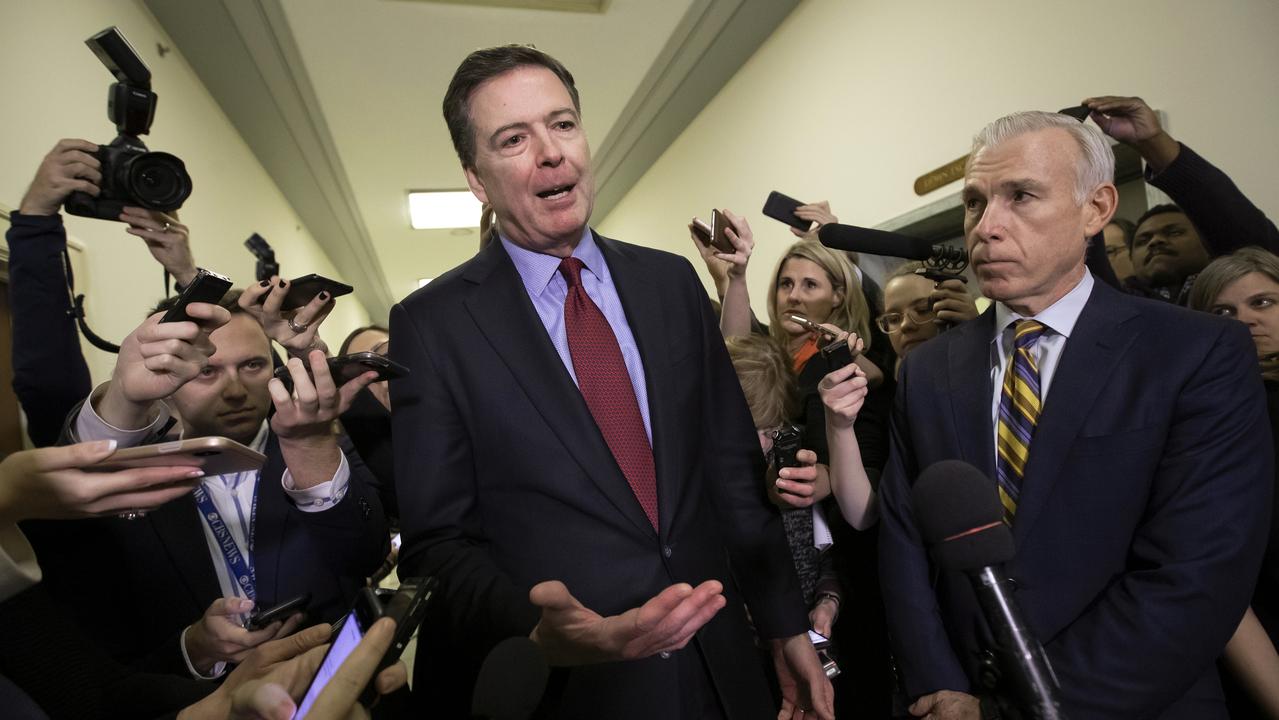Apple Isle at odds over twists in murder tale
Crime stories don’t come much more epic, labyrinthine — or divisive — than Sue Neill-Fraser’s murder conviction.

If a fiction writer had penned the Sue Neill-Fraser story, they’d be a worthy rival to John Grisham, Patricia Cornwell or Agatha Christie.
Crime stories don’t come much more epic or labyrinthine than Tasmania’s decade-long legal saga. With no body, no murder weapon and no witness to the act, the case was controversial right from the start.
In 2010 a jury unanimously found Neill-Fraser, a former owner of an equestrian school, guilty of murdering her partner of 17 years, hospital radiation physicist Bob Chappell.
The crime was committed on the well-heeled couple’s yacht, the Four Winds, on Australia Day 2009. The trial heard that Neill-Fraser regarded her relationship with Chappell as over. The jury and judge — Alan Blow, since made chief justice — accepted the prosecution case that she killed the father of three “with material gain in mind”. She stood to secure a bigger slice of his $1.3 million estate than she likely would have through separation.
The evidence was circumstantial but abundant and, in the jury’s eyes, ultimately persuasive.
Neill-Fraser appealed in 2012, and her sentence was reduced from 26 to 23 years, but her conviction was not quashed.
One key issue at that appeal — and before her second appeal bid, which concluded last week and awaits a decision — was the presence on the Four Winds of DNA matching that of a then homeless teenager, Meaghan Vass.
At the trial, Vass, who the court has since heard was an “ice-head … junkie” with criminal connections, denied ever being on the yacht.
The Director of Public Prosecutions claimed her DNA may have been a “secondary transfer”, such as spit carried on to the yacht on the sole of someone’s shoe, or deposited after the murder, when the yacht was held at a poorly secured slipway.
Neill-Fraser’s defence tried to recall Vass to establish her whereabouts on the night. Blow rejected the request, ruling the question was “peripheral”, given her firm evidence that she was not aboard Four Winds. The three appeal judges agreed.
The new legal bid is made under new laws allowing further appeals where there is “fresh and compelling evidence”.
In 2016 and early 2017, a team — including former Victorian detective Colin McLaren and filmmaker Eve Ash — spent time in Tasmania digging for new evidence that might blow the case open and provide material for a book and a documentary.
The new appeal application has heard McLaren quickly identified Vass as key. In early 2017 it seemed they had spectacularly succeeded. They had a legal coup de grace: a new, April 2017 affidavit from Vass saying she was on the yacht on the night after all, with others, and that Neill-Fraser was not on board.
However, on the day the application was due to be heard, in October 2017, The Australian revealed that this new “bombshell evidence” had itself imploded.

Now aged in her mid-20s and a long-time girlfriend of a Devils Henchmen bikie gang boss known as Sharky, Vass had reverted to her original story. She was not on the yacht and her April statement to the contrary was false. An agitated Vass explained to the application hearing she had made the false statement after being threatened by an associate who was another of Sharky’s lovers, that she would otherwise end up “in the boot of a car”. We will call her “the associate”. “It’s something that (the associate) has made up and wanted me to stick to,” Vass said. “I signed because I was petrified.”
McLaren and the associate claim Vass told them she was on the yacht on the night with two men and there was a fracas.
DPP Daryl Coates SC told the court McLaren fabricated Vass’s April statement and spent months “pressuring” her to agree to it. McLaren denied this.
Recordings show McLaren, when setting out on his investigation, suggested a $40,000 reward be used to “tease” Vass. There was evidence he was present when the associate made a threat to put Vass in a car boot, although he dismisses this as “just underworld noise”.
McLaren said he had no involvement in paying $3000 to a male friend of the associate’s.
One of several new books on the case, Death on the Derwent by true-crime writer Robin Bowles, sheds further light. Bowles writes that the associate told her Neill-Fraser, with whom the associate became close friends in Hobart’s Risdon Prison, had promised to buy her a house and that: “You and your children will never want for anything else when I get out.”
The associate, who the court has heard was involved in illegal drugs and guns, was recorded talking to her mother in prison. Bowles quotes transcripts suggesting the associate told her mother she had also been “guaranteed” a $50,000 education trust for her children.
Bowles quotes the associate as saying her initial motivation was financial: “I couldn’t care two f..ks for the money (now), but back then was I motivated by it? I was a drug addict. Of course I was. Did I force Meaghan into it? No. Did I lose control of it? Yes.”
In a video recording played to the court, McLaren appears to be dictating to filmmaker Ash a statement for Vass to later sign. He tells Ash: “Of course, your f..king lawyer friends will go all up in arms … it’s the only way we are going to get her (Vass).”
Police have charged several people, including a lawyer, with perverting the course of justice over alleged false evidence prepared for the appeal bid.
Despite this backdrop, Neill-Fraser’s legal team, led by Perth QC Tom Percy, has told judge Michael Brett it is still “reasonably arguable” McLaren was telling the truth when he said Vass confided to him she been on the yacht.
Vass flew to Melbourne last week to make yet another statement. McLaren says that in it Vass concedes “she was on the yacht that night”. Other sources say this is rubbish, that it merely concedes the DNA suggests she had been on the yacht but that she maintains she can’t recall ever being on board. It was not deemed strong enough to use in court.
Percy has, however, talked up new evidence about the nature of Vass’s DNA. Forensics expert Max Jones told the appeal the DNA sample was typical of a primary deposit, suggestive that Vass had been on the yacht.
However, Coates argued that Jones’s evidence also supported the prosecution’s position that if the deposit was primary, it occurred after the murder, when the yacht was stored at a slipway in Goodwood, in Hobart’s north.
Jones suggested the DNA was most likely deposited one or two days before the sample was collected, on January 30, 2009 — four days after the murder. The trial heard Vass had told police she may have been hanging around Goodwood at the time.
Apart from the “Vass factor”, the appeal bid also relies on new blood spot evidence.
A report from West Australian forensic consultant Mark Reynolds casts doubt on evidence at the trial suggesting blood may have been present in the Four Winds dinghy. The prosecution alleged Neill-Fraser used the dinghy to dump Chappell’s weighed-down body into the Derwent.
However, Reynolds conceded in court that no witness at the trial had asserted tests confirmed the presence of blood in the dinghy.
Percy’s team also pins some hope on an alleged case of mistaken identity. The trial was told that a witness saw a person of “female appearance” rowing towards the Four Winds about 11.30pm on the night of the murder, the prosecution asserting this was likely Neill-Fraser.
Percy produced a new witness, Grant Maddock, who said he was out rowing in the area at the time and, given his then long hair, might have been the person spotted. However, Coates countered that a woman Maddock met on the night he was out rowing had told police the occasion was January 24, not January 26.
Neill-Fraser’s supporters — including many senior citizens who attend hearings with a religious fervour — argue she was too readily fingered for Chappell’s disappearance and received rough justice. Some claim the continuing investigation on perversion of justice is part of a conspiracy to cover up this “miscarriage of justice”.
For many Tasmanians, though, much of the commentary reeks of mainland snobbery, the belief that the island is Hicksville, its authorities corrupt and its masses ignorant.
There is a strong argument that the legal process needs to run its course, wherever it leads.





To join the conversation, please log in. Don't have an account? Register
Join the conversation, you are commenting as Logout